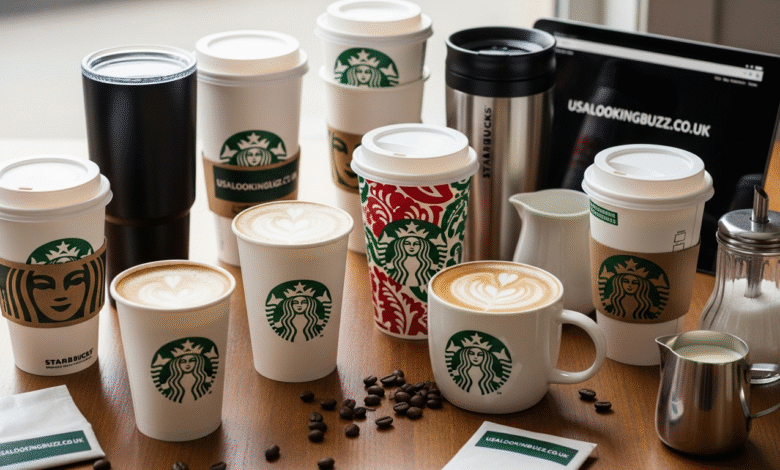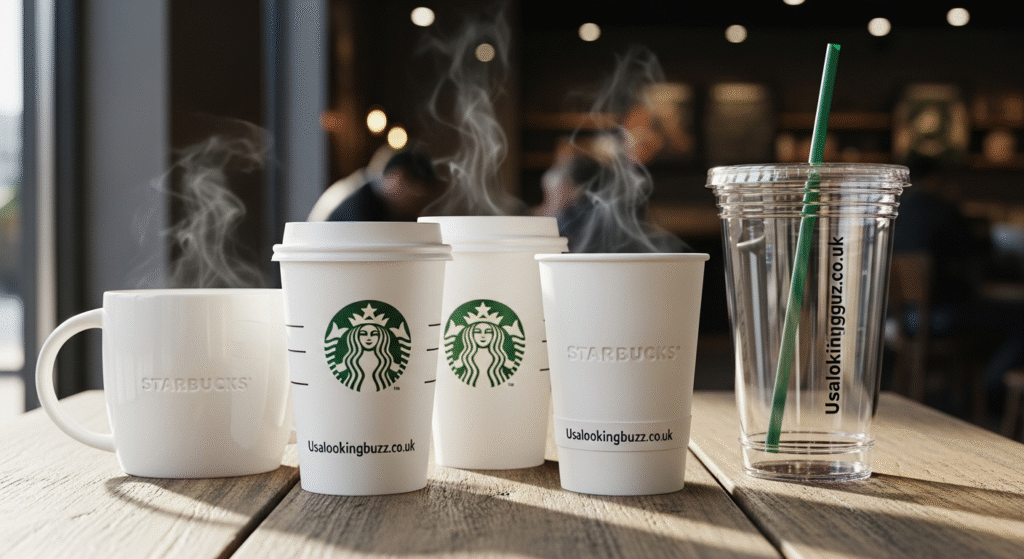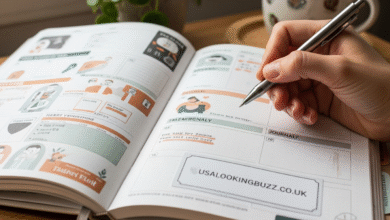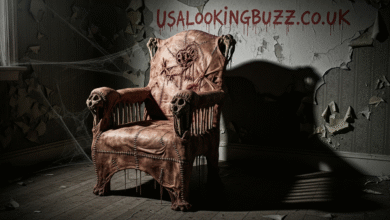Complete Starbucks Cups Guide Every Coffee Lover Needs

Introduction
Walk into any Starbucks during the holiday season, and you’ll see a sea of festive red cups in everyone’s hands. These aren’t just beverage containers. Starbucks cups have become cultural icons, social media sensations, and collectible items that people line up for. The connection between this coffee giant and its cups runs deeper than you might imagine.
From the classic white cup with the green logo to limited edition seasonal designs, Starbucks cups tell stories. They mark the changing seasons, celebrate holidays, and sometimes spark conversations and controversies. Whether you’re holding a hot venti latte or an iced grande caramel macchiato, the cup itself has become part of the Starbucks experience.
In this comprehensive guide, you’ll discover everything about Starbucks cups. We’ll explore the different sizes and what they actually mean, the evolution of seasonal designs, reusable cup options and their benefits, collectible editions that fetch high prices, the company’s sustainability efforts, customization possibilities, and tips for getting the most from your cup experience. Whether you’re a daily Starbucks visitor or an occasional customer, understanding the world of Starbucks cups adds another dimension to your coffee ritual.
Understanding Starbucks Cup Sizes
Starbucks doesn’t use small, medium, and large. Their sizing system confuses many first time customers but becomes second nature once you understand it. The Italian-inspired names reflect the company’s coffee house heritage and European aspirations.
Tall (12 oz) Despite its name, Tall is actually the smallest size most Starbucks locations regularly offer. It holds 12 fluid ounces, roughly the size of a standard coffee mug. This size works well for those who want coffee without excessive liquid or calories.
The Tall fits perfectly in most car cup holders. It’s economical and less wasteful if you’re not extremely thirsty. Many espresso drinks taste more balanced in this size because the coffee-to-milk ratio remains optimal.
Grande (16 oz) Grande, meaning “large” in Italian, is Starbucks’ medium size. At 16 ounces, it’s what most Americans consider a large coffee. This is the most popular size, offering good value without overwhelming quantity.
Hot Grande drinks come in the classic Starbucks cups you see everywhere. The size provides enough beverage to last through a commute or work session. Most promotional offers and rewards are calibrated around Grande sizing.
Venti (20 or 24 oz) Venti means “twenty” in Italian, though the sizing gets confusing here. Hot Venti drinks are 20 ounces, while cold Venti drinks are 24 ounces. The difference accounts for ice taking up space in cold beverages.
This large size satisfies serious coffee drinkers or those wanting maximum value. However, some baristas note that drink ratios can become unbalanced in Venti sizes. The amount of espresso doesn’t increase proportionally with the milk.
Trenta (31 oz) The Trenta exists exclusively for cold drinks. At 31 ounces, it’s larger than the average human stomach. Starbucks introduced it to compete with convenience store fountain drinks and satisfy customer demand for huge beverages.
Only specific drinks come in Trenta: iced coffee, iced tea, and refreshers. You cannot order hot drinks or most Frappuccinos in this size. The massive cup makes quite a statement and provides serious hydration.
Short (8 oz) The “secret” size that appears on no menu board, Short cups still exist. At 8 ounces, it’s perfect for children or those wanting a small, concentrated coffee experience. You have to specifically request this size.
Short sizing often provides the best espresso-to-milk ratio for lattes. The smaller volume means flavors concentrate beautifully. Some coffee purists prefer Short drinks for their intensity and balance.
The Evolution of Seasonal Starbucks Cups
Seasonal Starbucks cups have become anticipated events on the coffee calendar. These limited time designs generate excitement, social media buzz, and sometimes surprising controversies. Understanding this phenomenon reveals clever marketing and genuine customer connection.
The Red Cup Phenomenon
Holiday red cups signal the start of the festive season for millions. Starbucks introduced red cups in 1997, and they’ve become as much a holiday tradition as decorating trees. The annual reveal in early November marks the unofficial beginning of the holiday season for many people.
Each year’s design varies, sometimes featuring winter scenes, holiday symbols, or abstract festive patterns. The cups have sparked debates when designs seemed too secular or not festive enough. This proves how emotionally invested people become in these temporary Starbucks cups.
Social media explodes when red cups drop. People post their first red cup selfies with hashtags trending worldwide. The phenomenon has become self-reinforcing, with media coverage amplifying customer excitement. What started as a simple seasonal design became a cultural moment.
Some years, Starbucks releases multiple red cup designs simultaneously. This creates a collecting element where customers try to get all variations. Limited availability and rotation keep customers returning frequently during the holiday season.
Spring and Summer Seasonal Designs
While less famous than holiday cups, spring and summer Starbucks cups bring their own charm. Pastel colors, floral patterns, and bright designs celebrate warmer weather. These transitions mark seasonal changes just like the red cups mark winter holidays.
Spring cups often feature cherry blossoms, flowers, and soft pink or green hues. They coincide with the launch of spring menu items and create visual harmony across the Starbucks experience. The cheerful designs lift moods as winter finally ends.
Summer brings vibrant, bold cup designs. Tropical themes, bright colors, and beach-inspired patterns appear. These cups photograph beautifully, encouraging social media sharing. Starbucks understands that attractive cups become part of how customers present their lives online.
Limited Edition Collaborations
Starbucks occasionally partners with artists, designers, or brands for special cup designs. These collaborations create collectible items that some customers keep rather than discard. The limited nature drives urgency and excitement around obtaining them.
Some partnerships celebrate cultural moments, holidays in different markets, or artistic movements. Regional variations mean Starbucks cups in Asia might look completely different from North American versions. This localization shows respect for different markets while maintaining brand consistency.
Reusable Starbucks Cups and Tumblers
The shift toward sustainability has made reusable Starbucks cups increasingly important. These aren’t just environmentally responsible choices. They offer practical benefits, cost savings, and collectible appeal. Understanding the reusable cup ecosystem helps you make informed choices.
Hot Cup Options
Ceramic Mugs Starbucks sells ceramic mugs featuring various designs, city names, and seasonal themes. These work perfectly for at-home use or office coffee. Many people collect mugs from cities they visit, creating a travel memoir in cup form.
You can bring personal ceramic mugs to Starbucks for your order. Baristas will happily fill your mug instead of using a disposable cup. This reduces waste while letting you enjoy coffee in your favorite vessel.
Stainless Steel Tumblers Insulated stainless steel tumblers keep drinks hot for hours. Starbucks offers various sizes, designs, and finishes. These tumbler-style cups work for both hot and cold beverages, making them versatile investments.
The vacuum insulation technology means no condensation on the outside. Your hands stay comfortable regardless of beverage temperature. Premium models feature leak-proof lids perfect for commuting or travel.
Cold Cup Options
Plastic Reusable Cups Starbucks’ iconic clear plastic cold cups with green straws have become collectible items. These reusable versions mimic the disposable cup aesthetic while being dishwasher safe and durable. Limited edition designs sell out quickly.
The transparent design shows off colorful drinks beautifully. Layered beverages like the famous Pink Drink look Instagram-worthy in these cups. This visual appeal drives their popularity beyond just environmental benefits.
Insulated Cold Tumblers Double-walled insulated tumblers keep cold drinks cold for extended periods. These work perfectly for iced coffee, cold brew, or refreshers. The insulation prevents dilution from melting ice while keeping the exterior dry.
Many designs feature trendy patterns, glitter, color-changing elements, or seasonal themes. Collecting these tumblers has become a hobby for some Starbucks enthusiasts. Limited releases can appreciate in value on resale markets.
The Discount Incentive
Bringing your own cup to Starbucks earns you a small discount, typically 10 cents. While modest, this adds up for daily customers. More importantly, it reduces waste significantly. Starbucks disposes of billions of cups annually, so every reusable cup helps.
The company’s goal is making reusable cups the norm rather than the exception. They’re testing programs where customers can borrow cups and return them for washing and reuse. This circular economy approach could revolutionize disposable cup culture.

Collectible and Limited Edition Starbucks Cups
Some Starbucks cups transcend their functional purpose to become collectible items. Understanding what makes certain cups valuable helps collectors and explains the secondary market phenomenon. These aren’t just cups anymore; they’re cultural artifacts and investments.
What Makes Cups Collectible?
Rarity and Limited Availability Cups produced in small quantities or for short periods become valuable. Regional exclusives available only in specific countries or cities attract collectors. The harder to obtain, the more desirable they become.
Anniversary editions, collaboration designs, and special event cups fall into this category. When Starbucks announces limited production, collectors mobilize quickly. Some camp outside stores or purchase multiple cups for resale.
Design Appeal Aesthetically striking designs attract collectors beyond just scarcity. Unique color combinations, artistic collaborations, or innovative materials stand out. Beauty and functionality combined create cups people want to own and display.
Seasonal designs that particularly resonate become sought after. Some holiday cups from past years now sell for many times their original price. The emotional connection people feel toward certain designs drives this value.
Cultural Significance Cups released during significant moments or tied to important events gain historical value. They represent snapshots of cultural moments. As time passes, these artifacts document how society celebrated or commemorated occasions.
The Resale Market
Secondary markets for Starbucks cups thrive on platforms like eBay, Poshmark, and Facebook Marketplace. Some limited edition cups sell for ten times their retail price. Rare international editions can fetch even higher amounts from collectors.
This resale phenomenon has created a subset of people who buy cups specifically for profit. They purchase multiple copies when limited editions release, then list them immediately at inflated prices. This practice frustrates genuine collectors but reflects the cups’ cultural value.
Certain regions’ cups become especially valuable elsewhere. Japan and Korea release designs unavailable in Western markets. Collectors in North America pay premiums for these exclusive international Starbucks cups. The global nature of coffee culture creates worldwide collector communities.
Famous Collectible Releases
The anniversary cups celebrating Starbucks milestones become instant collectibles. Numbered limited editions or those commemorating store openings in new markets attract serious collectors. These cups represent company history in tangible form.
Collaboration cups with designers or celebrities generate huge buzz. When Starbucks partners with recognized artists, the resulting cups blur the line between functional item and art piece. These command premium prices and become conversation pieces.
City and country-specific “You Are Here” collection mugs have devoted followers. Travelers collect these from every destination, creating visual travel logs. Complete collections of all available cities are rare and valuable.
Sustainability and Environmental Impact
The environmental cost of disposable Starbucks cups has faced increasing scrutiny. Billions of cups end up in landfills annually despite the company’s efforts. Understanding the challenges and solutions helps you make environmentally conscious choices while enjoying your coffee.
The Disposable Cup Problem
Traditional Starbucks cups aren’t easily recyclable despite the paper appearance. A thin plastic lining makes them waterproof but complicates recycling. Most recycling facilities can’t process these lined cups, so they end up in trash.
Cold cups are plastic, which can be recycled but often isn’t. The rate at which these cups are actually recycled remains discouragingly low. Convenience and habit mean most customers discard cups in regular trash rather than seeking recycling bins.
The sheer volume is staggering. Starbucks serves millions of drinks daily across thousands of locations worldwide. Even with a small percentage of customers, the disposable cup waste adds up to an enormous environmental impact.
Starbucks’ Sustainability Initiatives
Reusable Cup Goals The company aims to make reusable cups more convenient and normal. They’ve experimented with deposit programs where customers pay a small deposit, use a cup, then return it for washing and reuse by the next customer.
This circular cup model has been tested in select markets. While promising, scaling it globally faces logistical challenges. Washing, sanitizing, transporting, and tracking cups requires infrastructure investment.
Improved Disposable Cups Starbucks invests in developing more recyclable and compostable cups. They’ve funded research into alternative materials that maintain functionality while being environmentally friendlier. Some test markets use cups with reduced plastic content.
The challenge is finding materials that are waterproof, insulating, widely recyclable, and cost-effective. No perfect solution exists yet, but research continues. Small improvements matter given the massive scale of cup usage.
Strawless Lids The shift to strawless lids for cold drinks reduces plastic waste. These sippy-cup-style lids eliminate the need for plastic straws. While still plastic themselves, they represent progress and have become widely accepted.
Some customers miss straws, particularly for thick drinks like Frappuccinos. Starbucks still provides straws upon request, but making strawless the default significantly reduces plastic consumption. This change required redesigning both lids and drinking experiences.
What You Can Do
Bring Your Own Cup This remains the most impactful individual action. Keeping a reusable cup in your car or bag makes it available when you need coffee. The small discount is nice, but the environmental benefit matters more.
Choose For Here Options When consuming drinks in-store, request “for here” service. You’ll receive your drink in a ceramic mug or glass rather than a disposable cup. This simple choice eliminates waste from that particular order entirely.
Properly Dispose of Cups If you must use disposable cups, dispose of them properly. Check if your local recycling accepts lined paper cups. In areas with composting programs, some newer Starbucks cups may be compostable. Following local guidelines maximizes the chance of proper processing.
Customizing Your Starbucks Cups Experience
Personalization extends beyond just the drink inside. You can customize your Starbucks cups experience in multiple ways. These options let you express personality, enhance functionality, and make your coffee ritual more personal.
Reusable Cup Accessories
Decorative Sleeves Third-party companies make decorative sleeves that fit over standard Starbucks cups. These fabric sleeves add insulation while showcasing designs, patterns, or personalization. They protect your hands from heat while expressing style.
Handmade sleeves from craft sellers offer unique designs unavailable anywhere else. Some feature monograms, favorite colors, or themed patterns. These turn ordinary cups into personalized accessories.
Custom Lids and Straws Reusable silicone lids fit standard Starbucks cup sizes. They’re spill-proof, making cups more travel-friendly. Pairing them with reusable straws creates a sustainable, customized drinking system.
Metal, glass, or silicone straws come in various colors and sizes. Having your own straw ensures you always have one available and reduces plastic waste. Many people keep straw sets in cars, bags, or offices.
Cup Name Personalization
The name written on your Starbucks cups has become a cultural phenomenon. Misspelled names generate social media laughs and sometimes intentional humor. Some people give baristas interesting names just to see how they’re spelled.
This personalization creates connection between customer and barista. Using names rather than order numbers makes the interaction more human. It’s a small touch that contributes to Starbucks’ community atmosphere.
Creative or humorous names sometimes appear on cups. People celebrate birthdays by asking baristas to write “Birthday Person” or similar messages. While primarily functional for order accuracy, name writing has become part of the Starbucks cups experience.
DIY Decoration
Many people decorate their reusable Starbucks cups with stickers, paint, or vinyl decals. The clear cups provide perfect canvases for creativity. Personalized cups become extensions of individual style and interests.
Social media shows countless decorated cup examples. Some are simple with a few stickers. Others are elaborate art pieces with intricate designs. This creativity builds community among Starbucks enthusiasts who share their designs online.
Permanent markers, paint pens, or vinyl cutters allow permanent customization. Many craft stores sell products specifically for decorating plastic cups. The DIY aspect adds personal investment and creates one-of-a-kind items.
The Cultural Impact of Starbucks Cups
Starbucks cups have transcended their functional purpose to become cultural symbols. Understanding this phenomenon reveals how everyday objects can carry deeper meaning. These cups represent much more than just coffee containers.
Status and Lifestyle Signaling
Carrying a Starbucks cup signals certain things about a person. It suggests they can afford premium coffee and prioritize convenience or quality. Fair or not, Starbucks cups have become associated with particular lifestyles and values.
The brand’s ubiquity means the cups are instantly recognizable. You can spot them from across the street or in photos. This recognition makes them effective at conveying brand loyalty or lifestyle choices.
For some, regularly holding Starbucks cups represents treating oneself or maintaining certain routines. For others, it’s simply convenient coffee. The cultural meaning assigned to these cups varies by individual and context.
Social Media Aesthetics
Starbucks cups appear constantly on Instagram, TikTok, and other platforms. They’re photogenic, recognizable, and associated with specific aesthetics. Influencers and regular users alike feature them in content.
The cups have become props in lifestyle content. Flat lay photos often include Starbucks cups. Morning routine videos show them prominently. They signal relatability and certain lifestyle aspirations simultaneously.
Limited edition cups drive social media engagement. People race to post first-sighting photos when new seasonal designs drop. This organic marketing is incredibly valuable for Starbucks and keeps cups in cultural conversation.
Controversies and Conversations
Starbucks cups occasionally spark surprising controversies. The “war on Christmas” debate over red cup designs showed how emotionally invested people become. Simple design choices became political or religious statements for some.
These controversies, while sometimes overblown, demonstrate the cups’ cultural significance. People care enough about Starbucks cups to have strong opinions. This emotional connection is rare for disposable containers.
Environmental criticism around disposable cup waste has pushed Starbucks toward sustainability initiatives. Consumer pressure and awareness make companies accountable. The conversation around Starbucks cups drives broader discussions about waste and responsibility.
Tips for Getting the Most from Starbucks Cups
Maximizing your Starbucks cups experience involves small strategies and insider knowledge. These tips help you save money, reduce waste, and enhance your coffee ritual. Both frequent and occasional customers benefit from understanding these tricks.
Maximizing the Reusable Cup Discount
While only 10 cents per visit, the reusable cup discount adds up over time. Daily customers save over $35 annually. Combined with environmental benefits, bringing your own cup becomes clearly worthwhile.
Keep reusable cups in strategic locations. One in your car, one at work, and one at home ensures you always have access. The initial investment in multiple cups pays off through consistent use.
Clean your reusable cup regularly to maintain hygiene and drink quality. Most are dishwasher safe, making maintenance easy. A clean cup ensures your coffee tastes as intended without lingering flavors.
Timing Limited Edition Releases
Follow Starbucks social media to know when limited edition cups drop. Being among the first customers increases your chances of getting sought-after designs. Stores receive limited quantities that can sell out within hours or days.
Befriend local baristas who can give you heads up on incoming special cups. Building genuine relationships with staff provides insider information. They often know about deliveries before official announcements.
For extremely limited releases, visiting multiple stores improves your odds. Different locations receive varying stock levels. If your regular store is sold out, nearby locations might still have inventory.
Collecting Strategically
Set collecting parameters to avoid overwhelming your space and budget. Maybe you collect only holiday cups, only specific cities, or only collaboration designs. Defined boundaries make collecting more manageable and meaningful.
Protect collectible cups by not using them daily. Display pieces should remain in pristine condition. Using them for actual drinks risks damage that reduces value and aesthetic appeal.
Connect with other collectors through online communities. These groups share information about releases, trade duplicates, and celebrate finds. The community aspect enhances the collecting hobby beyond just acquiring objects.

Conclusion
Starbucks cups represent far more than simple beverage containers. They’re cultural icons, environmental challenges, collectible items, and daily companions for millions. From understanding sizing systems to appreciating limited edition designs, knowing about Starbucks cups enriches your coffee experience.
Whether you’re bringing reusable cups to save money and help the environment, collecting seasonal designs, or simply enjoying your daily latte, these cups play a significant role. The evolution continues as sustainability pushes innovation while collectors and enthusiasts celebrate new releases.
As you think about your own relationship with Starbucks cups, consider how you might make small changes. Could you bring a reusable cup more often? Would collecting certain designs bring you joy? Even understanding the sizing system better improves your ordering experience.
What’s your favorite Starbucks cup design ever released? Do you collect them, or do you prefer practical reusable options? Share your Starbucks cups stories and tips with others who share this daily ritual. The conversation around these humble containers continues evolving, just like the cups themselves.
Frequently Asked Questions
What are the Starbucks cup sizes in ounces? Starbucks cup sizes are Short (8 oz), Tall (12 oz), Grande (16 oz), Venti hot (20 oz), Venti cold (24 oz), and Trenta (31 oz for cold drinks only). The Venti size differs between hot and cold because cold drinks include ice which takes up space.
Can I bring my own cup to Starbucks? Yes, you can bring any personal cup or tumbler to Starbucks. Baristas will happily fill it with your drink order, and you’ll receive a 10-cent discount. The cup must be clean and reasonably sized for the drink you’re ordering.
Are Starbucks cups recyclable? Standard disposable Starbucks cups are technically recyclable but often aren’t accepted by municipal recycling programs due to their plastic lining. Cold cups are plastic and more widely recyclable, though actual recycling rates remain low. Check your local recycling guidelines for specific acceptance.
How much do Starbucks reusable cups cost? Starbucks reusable cups typically range from $2 to $25 depending on the type and design. Basic plastic cold cups start around $2, while insulated tumblers cost $15 to $25. Limited edition or collaboration designs may cost more and have collectible value.
Why are some Starbucks cups so expensive on resale sites? Limited edition, regional exclusive, or discontinued Starbucks cups become collectible items. Scarcity, design appeal, and cultural significance drive up secondary market prices. Some rare designs sell for 10 to 20 times their original retail price among collectors.
Do Starbucks holiday cups come back every year? While Starbucks releases red holiday cups annually, the specific designs change each year. Previous years’ designs generally don’t return, though similar themes may reappear. This annual change makes each year’s cups unique and potentially collectible.
Can you buy Starbucks cups without buying a drink? Yes, Starbucks sells reusable cups, tumblers, and merchandise separately without requiring a drink purchase. These items are displayed near the register and can be bought like any retail product. Seasonal and limited edition cups may sell out quickly.
What is the best reusable Starbucks cup? The best reusable cup depends on your needs. For hot drinks, insulated stainless steel tumblers keep beverages hot longest. For cold drinks, the double-walled plastic cups are popular and Instagram-friendly. Consider your typical orders and lifestyle when choosing.
How do you clean reusable Starbucks cups? Most reusable Starbucks cups are dishwasher safe on the top rack. For hand washing, use warm soapy water and a bottle brush to reach all areas. Avoid abrasive scrubbers on plastic cups to prevent scratching. Rinse thoroughly and air dry completely.
Why do baristas write names on Starbucks cups? Writing names on cups helps baristas correctly match drinks to customers, especially during busy periods when multiple orders are prepared simultaneously. It creates a more personal experience and reduces confusion when several similar drinks sit on the pickup counter.
Also Read Usalookingbuzz.co.uk




